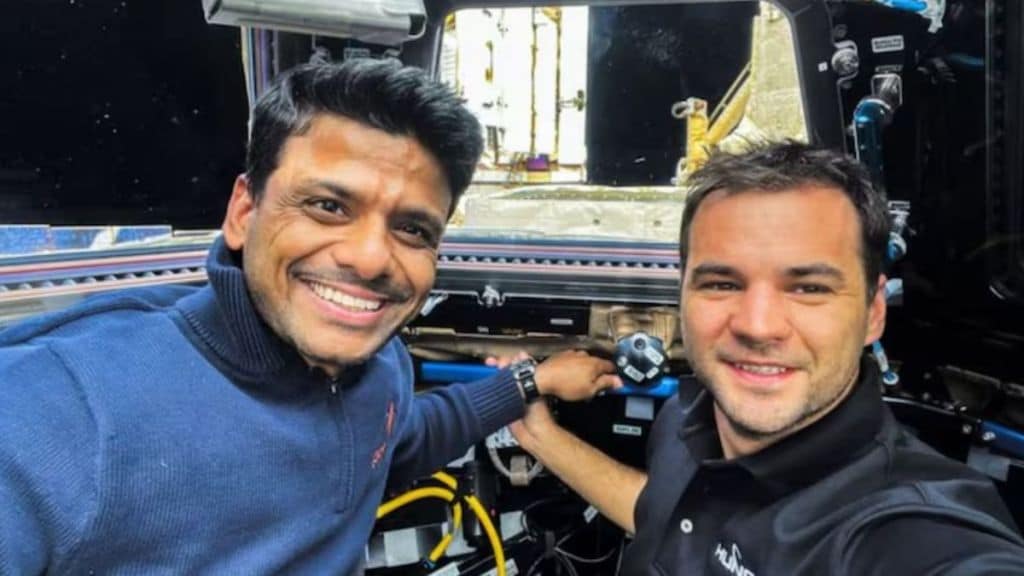Indian astronaut Shubhanshu Shukla, currently aboard the International Space Station (ISS), is contributing to a historic study that could redefine how diabetes is understood and managed, not just in space, but back on Earth as well.
As part of Axiom Mission 4 (Ax-4), Shukla is involved in over 60 scientific experiments. Among the most significant is “Suite Ride,” a research project that aims to understand how microgravity affects glucose metabolism. The findings could pave the way for future space missions that include astronauts with insulin-dependent diabetes—a group currently excluded from spaceflight due to medical risks.
Challenging old rules around diabetes in space
People with diabetes have historically been considered unfit for space travel due to the complexity of managing blood sugar in zero gravity. But the Ax-4 mission, in collaboration with Burjeel Holdings, is challenging that limitation.
“Suite Ride” is investigating how the space environment affects glucose metabolism in the human body. This can enhance our understanding of diabetes and other metabolic diseases that impact blood sugar regulation,” Dr. Mohammad Fityan, Clinical Lead for the Suite Ride project and Chief Medical Officer at Burjeel Medical City, told India Today.
The project explores how Continuous Glucose Monitors (CGMs) and insulin behave in microgravity. These tools are already transforming diabetes care on Earth and could potentially be adapted for space environments.
Why microgravity is a unique research setting
Space provides a rare opportunity to study the human body without the constant pull of gravity. This allows scientists to observe changes in metabolism, muscle mass, fluid distribution, and even sleep cycles in a controlled setting.
“Microgravity allows us to study metabolism without the influence of gravity. It may help identify novel pathways and early biomarkers for insulin resistance,” Dr. Fityan said in an interaction with India Today.
Such findings could deepen medical understanding not only of diabetes but of other chronic metabolic conditions as well.
How the experiment works aboard the ISS
During the two-week mission, participating astronauts are outfitted with CGMs that monitor glucose levels in real-time. While insulin pens were sent aboard the mission, astronauts are not administering insulin. Instead, researchers are examining how insulin responds to space storage conditions and whether it remains stable and effective.
“Point-of-care blood samples are also being taken to validate CGM data,” Dr. Fityan explained in a media interaction. “Burjeel Holdings provided lancets, needles, and blood glucose analysers for the mission.”
The experiment is designed to simulate real-world diabetes monitoring in space to determine how the body would react if insulin-dependent astronauts were one day cleared for space travel.
Addressing the risks for diabetic astronauts
Dr. Fityan explained the key challenges that currently prevent diabetic individuals from participating in spaceflight:
- Dangerous glucose variability without immediate medical support
- Unpredictable insulin absorption in microgravity
- Difficulty maintaining stable glucose levels over long missions
Understanding these variables in healthy astronauts is the first step toward adapting medical protocols that would allow people with chronic conditions like diabetes to safely join future missions.
“This research expands spaceflight eligibility by developing technologies and protocols, not by relaxing medical standards,” Dr. Fityan said.
Implications for diabetes care on Earth
The benefits of the Suite Ride study are not limited to future astronauts. The data could be used to improve diabetes care in remote, underserved, or extreme environments here on Earth.
Potential applications include:
- Enhanced remote monitoring platforms
- More durable and precise glucose sensors
- AI-driven predictive models for managing blood sugar
- New drug targets to boost insulin sensitivity
These advances could significantly improve outcomes for diabetic patients, especially those in regions with limited healthcare access.
What’s next?
Once the Ax-4 mission is complete and astronauts return to Earth, researchers will begin detailed analysis of the data collected from CGMs and blood samples.
“We hope this research opens the door to future studies, including missions with the first astronaut with diabetes,” said Dr. Fityan.
Shubhanshu Shukla’s participation marks a proud moment for India, not just for space exploration, but also for global health innovation. The Ax-4 mission has the potential to transform diabetes care and broaden access to space for people with chronic conditions.
As space agencies and private firms plan longer and more inclusive missions, this study could be a key step in ensuring that no chronic condition is an automatic barrier to reaching the stars.








